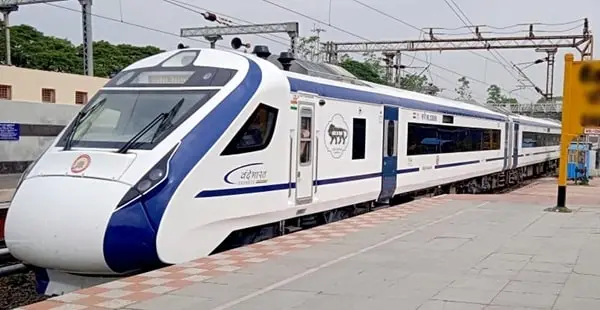The Indian Railways is set to make a significant leap in its high-speed rail capabilities with the planned introduction of an indigenous bullet train. This development marks a pivotal moment in India’s transportation history, promising speeds exceeding 250 km/h and building on the success of the Vande Bharat Express trains.
Technical Specifications and Capabilities
The new bullet trains will be designed and manufactured by the Integral Coach Factory (ICF) in Chennai. These trains are expected to outperform current high-speed rail technologies globally, including the Japanese Shinkansen. One of the standout features is the ability to accelerate from 0 to 100 km/h in just 52 seconds, a notable improvement over existing models.

Design and Manufacturing
The design of these bullet trains will leverage the existing Vande Bharat platform, which is known for its robustness and efficiency. The ICF is spearheading this project, ensuring that the trains are equipped with state-of-the-art technology and safety features. This initiative is part of a broader “Make in India” campaign, aimed at boosting domestic manufacturing capabilities and reducing reliance on foreign technology.
Economic and Social Impact
The introduction of these high-speed trains is expected to have a profound impact on India’s economy. Faster travel times will enhance connectivity between major cities, fostering economic growth and facilitating easier movement of people and goods. Moreover, the development of indigenous high-speed rail technology will create numerous job opportunities and drive technological advancements in the domestic manufacturing sector.
Challenges and Future Prospects
While the potential benefits are significant, the project also faces several challenges. These include the need for substantial investment in infrastructure, the adaptation of existing rail lines to support high-speed travel, and ensuring that safety standards are met. Despite these challenges, the Indian government is optimistic about the project’s success and is committed to overcoming these hurdles through strategic planning and investment.
Conclusion
The rollout of India’s first indigenous bullet train is poised to transform the country’s rail network, positioning India as a leader in high-speed rail technology. As the project progresses, it will be crucial to monitor its development and address any challenges that arise to ensure its successful implementation. This initiative not only represents a technological milestone but also underscores India’s growing capabilities in advanced engineering and manufacturing.

